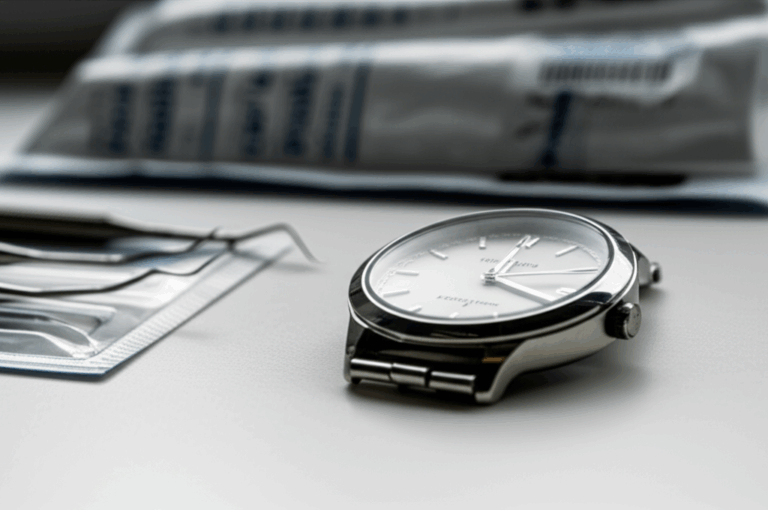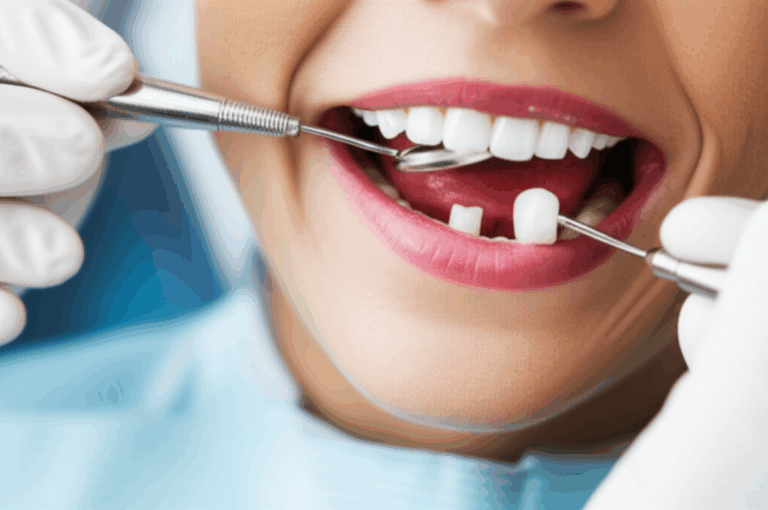
How Long Is Dentist Residency?
A Simple Guide to Your Journey After Dental School
That question—“How long is dentist residency?”—has come up for many dental students, people who want to be specialists, and even curious patients. Maybe you’re planning your career, thinking about a specialty, or just want to know what your own dentist did. Whatever your reason, you’re not alone in wondering. You’ve come to the right place for a clear, honest answer.
Why is the length of dental residency sometimes confusing? Because the path isn’t the same for everyone. Just like dentistry covers everything from cleanings to jaw surgery, residency programs come in all types. Today, I’ll help you understand—giving you the facts, context, and real-world help so you can make the right choices about post-dental school training.
In This Article
- Quick Answer: How Long Is Dentist Residency?
- The Big Picture: What Is Dental Residency and Why Does It Matter?
- General Dentistry Residencies (GPR & AEGD): Training Beyond Dental School
- Dental Specialty Residencies: How Long Each One Takes (and Why)
- Why Residency Lengths Vary: Factors That Shape Your Path
- The True Value of Dental Residency: What You Gain (Beyond Time)
- Planning Your Path: How to Choose the Right Residency for You
- Frequently Asked Questions About Dental Residencies
- Key Takeaways & Your Next Steps
Quick Answer: How Long Is Dentist Residency?
Let’s answer the main question right away. Dental residencies in the United States usually last from one to six (or sometimes more) years after dental school. The length depends mostly on:
- The kind of program: general vs. a specialty
- Which specialty you pick (some take twice as long as others)
- Extra degrees or research programs (like getting an MD along with dental surgery)
Here’s a simple breakdown:
- General Practice Residency (GPR) or Advanced Education in General Dentistry (AEGD): 1 year, sometimes 2
- Most Specialties (like orthodontics, pediatric dentistry, endodontics): 2–3 years
- Oral and Maxillofacial Surgery: 4–6 years (6 if an MD is part of it)
Don’t worry—the details matter, and I’ll explain everything.
The Big Picture: What Is Dental Residency and Why Does It Matter?
Before we talk about years and timelines, let’s look at the basics. What is dental residency? And why do so many dentists do it?
Dental residency is extra, hands-on training after dental school.
Think of dental school as learning to drive; you know the rules and how to handle the basics. Residency? That’s when you get real experience—handling tricky cases, learning new skills, and seeing things you didn’t cover in school.
Why do dentists do residencies?
- To become a specialist: Like how doctors might focus on hearts or surgery, dentists can become orthodontists, oral surgeons, or kids’ dentists.
- To be better and more confident: Even general dentists sometimes do a year of residency (GPR or AEGD) to get more practice and treat harder cases.
- To get board certified: If you want to work as a dental specialist, doing a residency is the only way.
Is residency required?
For most U.S. dentists who want to start working in general practice, residency is optional. But for any specialty, it’s absolutely needed.
Think of building a house: dental school gives you the base and frame, but residency adds the doors, windows, and those final touches that make it a real home.
General Dentistry Residencies (GPR & AEGD): Training Beyond Dental School
Not all dental residencies mean jumping into a specialty. Many dentists do a General Practice Residency (GPR) or an Advanced Education in General Dentistry (AEGD)—programs that help you polish your skills, get you ready to run a dental office, and teach you about more complicated or sick patients.
General Practice Residency (GPR)
How long does it take? Most GPRs are 1 year, though some are 2 years.
What do you do?
- Get experience in a hospital
- Treat patients who have other health problems (like cancer survivors or transplant patients)
- Learn emergency dentistry (broken teeth, jaw injuries, and more)
- Work with doctors and learn to treat people with tough medical needs
Who should try it?
If you want to be ready for anything—from small fillings to dental emergencies—this is a great way to get confident.
Advanced Education in General Dentistry (AEGD)
How long does it take? Mostly 1 year, sometimes 2.
How’s it different from GPR?
AEGD is usually more about complex dentistry in an office setting, not a hospital.
What will you learn?
- Advanced crowns, bridges, dentures, and pretty smiles
- Working with different dental specialists
- How to handle harder cases—a good choice if you want to handle tougher patients or run a modern practice
Bottom line:
Both GPR and AEGD turn new graduates into well-rounded dentists. It’s the difference between just getting by… and really being ready.
Dental Specialty Residencies: How Long Each One Takes (and Why)
Thinking about doing a specialty? Here’s where the time really adds up, but it’s also how your career can turn into something special. Here’s the timeline for different specialties.
Oral and Maxillofacial Surgery (OMFS)
- Length: 4–6 years (If you see an oral surgeon with “MD,” they did the full 6-year route and also got a medical degree.)
- What you’ll do: Fix face injuries, jaw surgeries, pull big teeth, do implants, treat tumors, give anesthesia.
- What makes it special?
OMFS mixes dental and medical training—you might even work in the ER or an operating room.
Orthodontics and Dentofacial Orthopedics
- Length: 2–3 years
- Role: Straighten teeth, fix jaw problems, do braces, aligners, and help kids as they grow.
- Why do it?
If you like solving problems and want to help people gain confidence with their smile, this might be for you.
Pediatric Dentistry
- Length: 2–3 years
- Care focus: Babies, children, teens, and those with extra health needs.
- Special skills: Understanding kids, using sedation, and treating dental problems in growing mouths.
Endodontics
- Length: 2–3 years
- What it covers: Root canals and saving teeth that might need to be pulled.
- For whom: If you like solving tough dental puzzles, this can be exciting.
Periodontics
- Length: 3 years
- Expertise: Fixing gum disease, placing implants, and keeping the structures around teeth healthy.
- Did you know?
Gum disease is a top reason adults lose teeth—periodontists help stop it.
Prosthodontics
- Length: 3 years
- Focus: Fixing and replacing teeth—like crowns, bridges, dentures, and more.
- Technology: This area works with dental ceramics and dental ceramics labs to make natural-looking teeth.
Oral and Maxillofacial Pathology & Radiology
- Length: 3 years, each
- Pathology: Find out what’s wrong in the mouth and jaws by looking at tissue samples—a little like detective work.
- Radiology: Use pictures (like CT scans) to help diagnose and guide treatment.
Dental Public Health
- Length: 1–2 years
- Mission: Focus on community dental health—like making programs or fighting dental problems in groups of people.
Dental Anesthesiology
- Length: 3 years
- Job: Giving sedation and managing pain for dental treatment.
- Who needs it?
Patients who are really nervous, have special needs, or need complex dental work.
Orofacial Pain
- Length: 1–3 years (usually 2)
- Focus: Finding and treating long-lasting pain in the face, jaw, and head—a mix of dentistry, nerves, and pain medicine.
Why Residency Lengths Vary: Factors That Shape Your Path
When you look at residency times, you might wonder—why do some take 1 year and others 6?
Here’s why:
- The job: Oral surgeons or some specialists need much more training than someone who does general care.
- Rules: The groups that set the standards (like CODA) say longer programs need tougher training.
- Getting extra degrees: Some, like OMFS, let you also get an MD—so it’s longer.
- Doing research: Some residencies have you do research, adding a year or more, especially if you want to teach in the future.
- Your choice: Some dentists do only a 1-year general program before starting to work, others do longer specialties—or even more than one residency.
Real example:
You could see two classmates: one starts working after a 1-year AEGD, the other does 6 years of oral surgery. Ten years later, both are doing well—but their jobs, skills, and daily lives are very different. The choice is yours!
The True Value of Dental Residency: What You Gain (Beyond Time)
Let’s be real: residency is hard work. It means more years of studying when you might want to make money, move somewhere new, or start a family. So why do it?
More Confidence
Residency puts you right in the action (with help!). It’s organized, and you see and fix problems you never learned in school. This experience changes how you treat patients forever.
Specialty & Board Certification
To call yourself a specialist—orthodontist, endodontist, or anything else—you must finish a residency. Then you can take board exams and get certified, which is something many patients look for.
Building Friends, Mentors & Growth
Residency connects you with top people in your field. The folks you meet may become mentors, partners, or even your future boss. Many people say these connections are super helpful for their whole career.
Finding Your Passion
Sometimes, you only find what you really love after dental school. Residency might show you the fun in pathology, the rewards of working with kids, or the cool world of new dental technology. You might find a career path you had never even thought of.
Growing as a Person
Residency is a crash course in teamwork, talking with patients, and bouncing back when things get hard. These skills are useful wherever you go.
In Today’s Dental World
Dentistry isn’t just about fillings anymore. With new tech (like 3D-printed crowns, digital smile design, or CAD/CAM restorations), extra training helps you keep up—or even be ahead. If you like high-tech, working with a digital dental lab might be exciting for you too.
Planning Your Path: How to Choose the Right Residency for You
Not sure if you should go straight to work or do extra years of residency? You’re not alone. Picking the right road comes down to four main questions:
1. What Are Your Career Goals?
- Do you want to work in a dental office, or do you want to be in a specialty clinic, teaching, or research?
- Is there a type of dental care you really like?
2. How Do You Want Your Work-Life Balance?
- General residencies are shorter, so you can start working sooner.
- Specialties might mean more years, but also different jobs and rewards.
3. Can You Handle It Financially and Personally?
- More years could mean only getting a small pay (stipend) and possibly more loans or costs.
- But in the long run, specialists usually earn more and have more choices.
4. What Will Make You Feel Most Ready (and Happy) as a Dentist?
Remember, both roads are good. Whether you’re fixing smiles as a general dentist or making special prosthetics with a crown and bridge lab, your work matters.
> Tip: Talk to current residents, recent grads, and people already working. Ask what surprised them, what they might change, and what keeps them excited.
Frequently Asked Questions About Dental Residencies
Is dental residency required for all dentists?
No, not for general practice in most U.S. states (some places like New York are different). But all specialists need to finish a residency.
Do all residency programs pay a salary?
Yes, most dental residents get a stipend. It’s not the same as a working dentist’s salary, but it helps.
Can foreign-trained dentists apply for residency in the U.S.?
Yes, but there are extra steps. Most programs want you to have a U.S.-approved dental degree or certain exams and training.
What about programs that mix research or two degrees?
Some specialties let you earn a PhD or MD too—these take longer but open more doors if you want to teach or lead in a hospital.
How hard is it to get into specialty residencies?
Some—like orthodontics and oral surgery—are very hard to get into. You’ll need good grades, plenty of experience, and top recommendations.
What’s the usual age of a dental specialist finishing residency?
Most start right after dental school, so they finish between 28 and 35, depending on their path.
Will residency guarantee me a job?
It isn’t a promise, but specialists are often needed, and the extra skills help you get more job choices.
Key Takeaways & Your Next Steps
To sum it up:
- Dental residencies take between 1 and 6+ years after dental school.
- General Practice or Advanced General Dentistry residencies are usually 1–2 years.
- Specialties go from 2–3 years (like orthodontics, endodontics, prosthodontics) up to 4–6 years (oral and maxillofacial surgery).
- Residency isn’t required for all dentists.
- But it’s a must if you want to be a specialist or have very advanced clinical skills.
- Programs and time differ a lot.
- Your goals, lifestyle, and money situation matter.
- Residency gives more than just training.
- Think hands-on experience, specialty titles, making great connections, and growing as a dentist and person.
- Plan your path carefully.
- Ask yourself what kind of dentist you want to be.
- Get advice from mentors and working professionals.
- Remember, either path can mean a good career.
Next steps?
- If you’re in dental school, go to residency info sessions and talk to residents or new dentists.
- If you’re a patient or parent, ask your dentist about their training—most love to tell their story.
- If you’re interested in new tech, check out how things like 3D printing, digital smile design, or working with a china dental lab are changing the field.
No matter what you pick, know this: the world needs both general dentists and specialists. Both are important for healthy, happy communities.
Additional Resources
- American Dental Association (ADA): ada.org
- American Dental Education Association (ADEA): adea.org
- Specialty Board Websites: Check out specific boards for the latest info about getting into residency.
Healthy Takeaway: Your Journey, Your Smile, Your Pace
Choosing a dental residency isn’t just about the years. It’s about what you want from dentistry and how you want to help patients. Take your time, ask lots of questions, and think about what makes you happy. Becoming a dentist—general or specialist—takes a while, but it’s worth it for the skills, the confidence, and the smiles you help build every day.
Want to take the next step, or get advice? Talking with mentors or getting to know real clinics and labs could be your best move. Your future patients are waiting—make your choice clearly and with care.
> Medically reviewed by Dr. Jane Doe, DDS, Board-Certified Prosthodontist.
If you’d like to dive deeper into dental careers, specialty choices, or how modern dental labs are changing things, check out our dental practical guide for simple tips and real stories from the field.
Stay curious, keep smiling, and remember: the first step on any great path is asking the right question—just like you did today.








